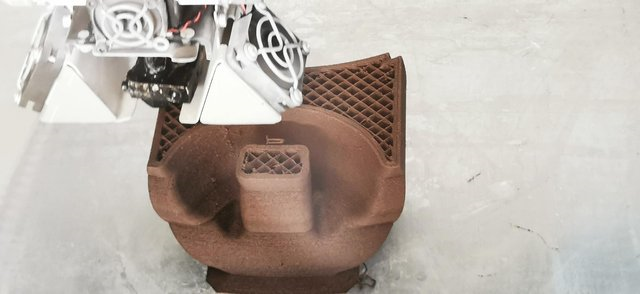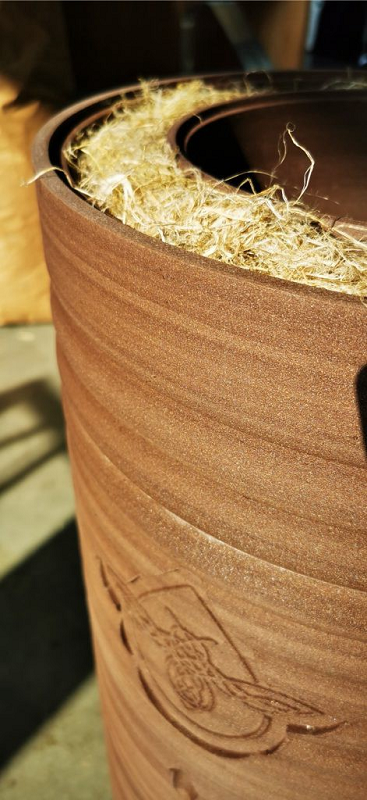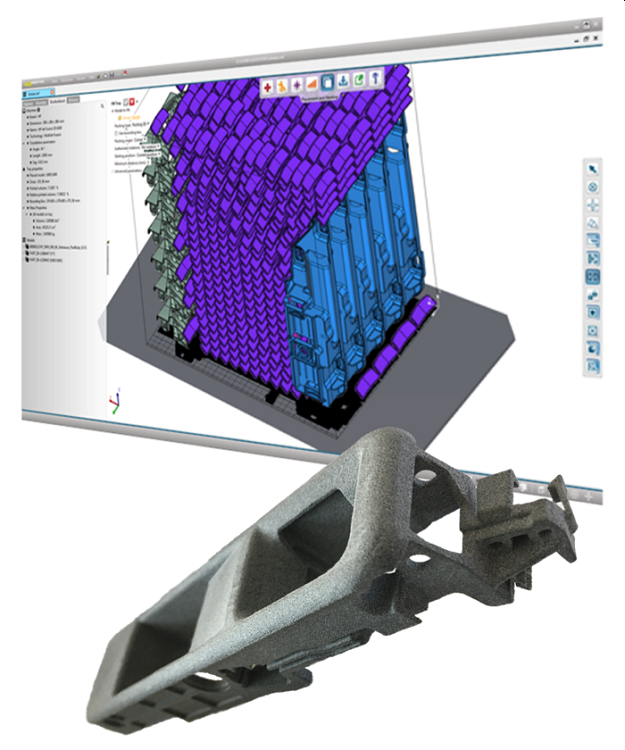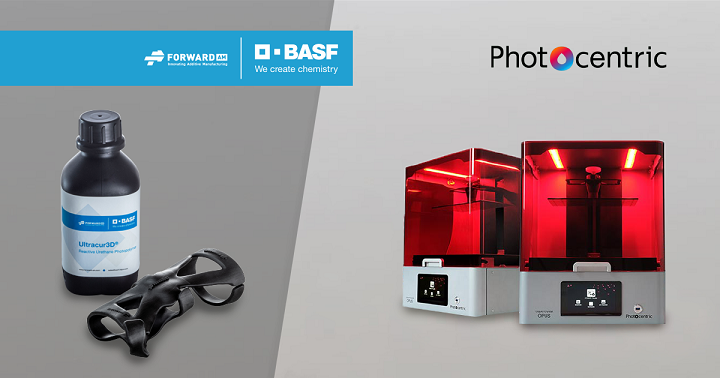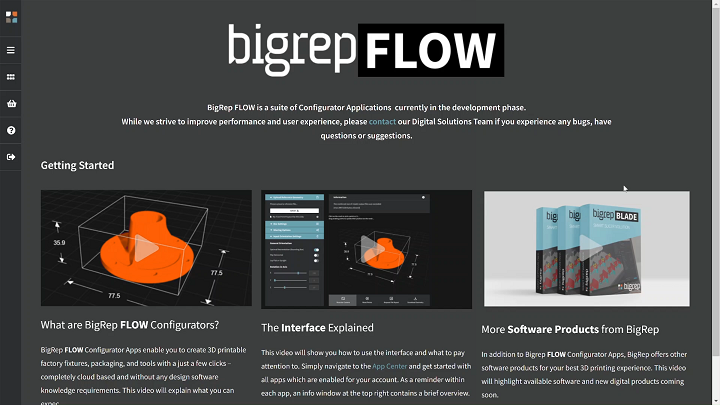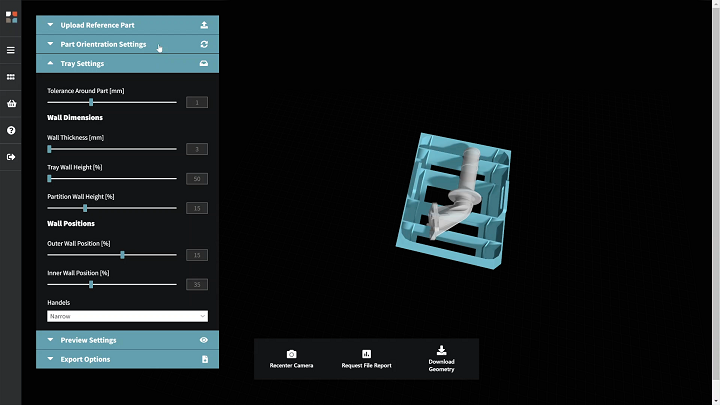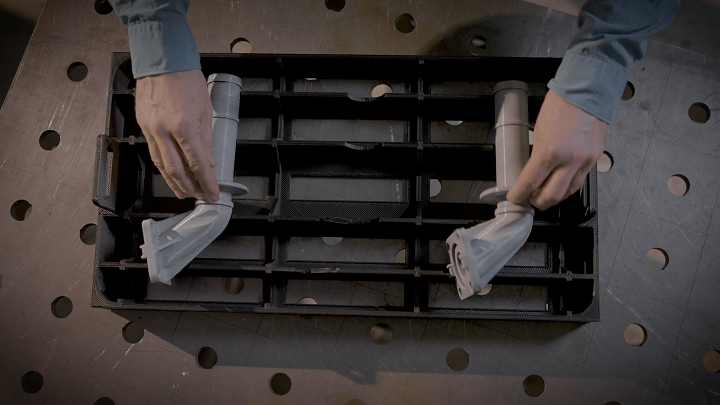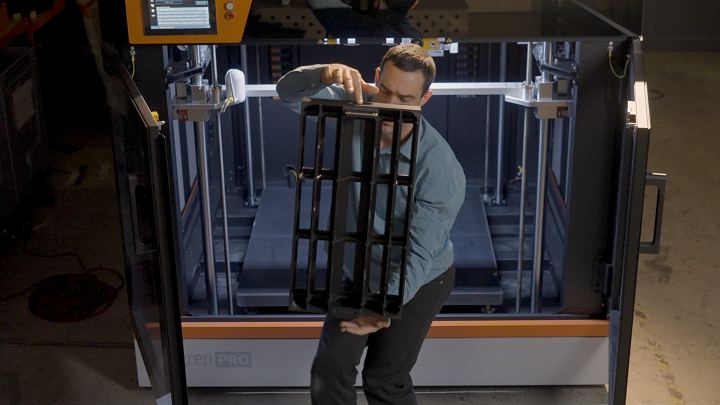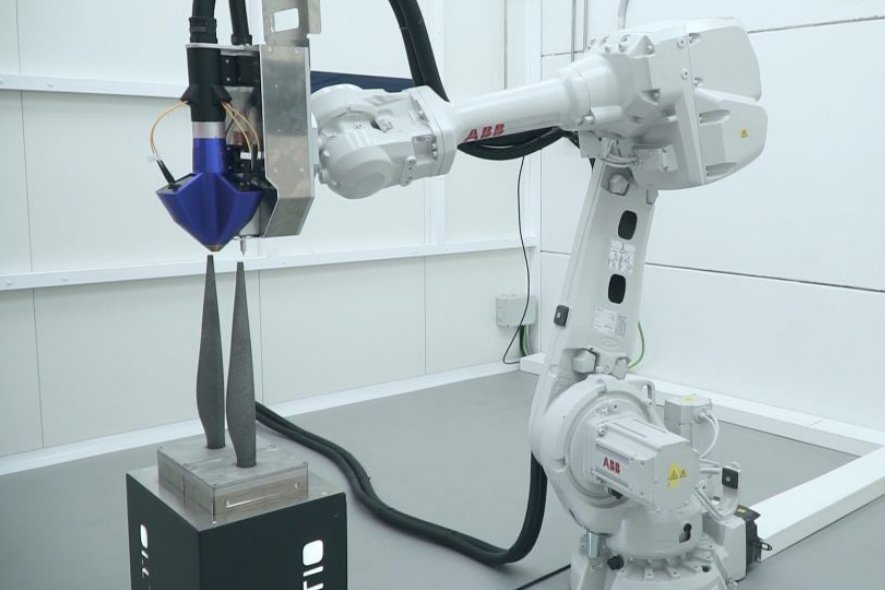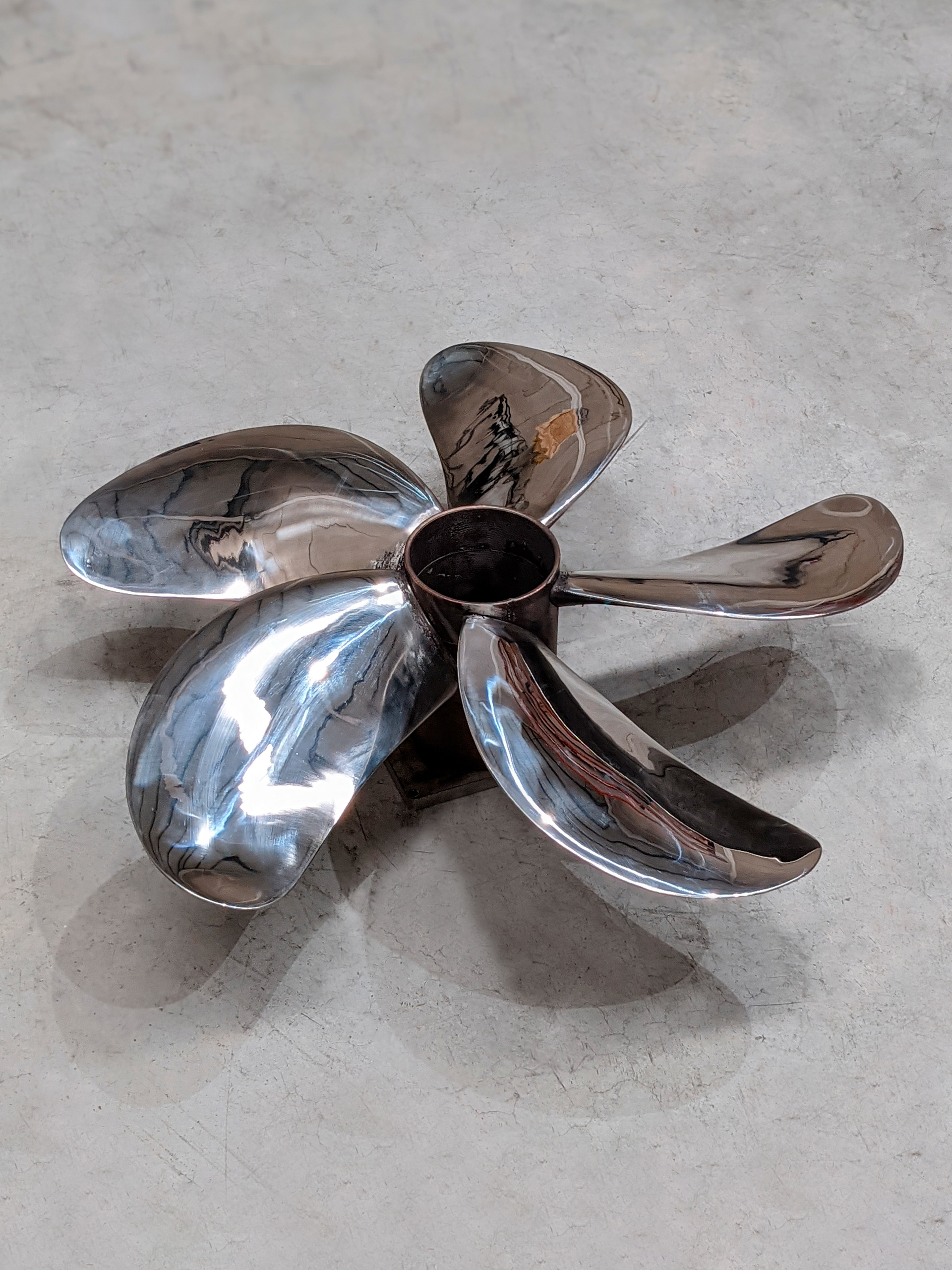3DPrint.com | The Voice of 3D Printing / Additive Manufacturing |
- Wooden 3D Printed Bee Hive Offers Scottish Honey Bees a Safe Home
- 3D Printing News Briefs, May 11, 2022: Software, Research, & More
- Custom 3D Printed Tooling Gets Automated with BigRep’s FLOW Software
- Low-Cost DED Metal 3D Printing Heads to Singapore and Argentina via Meltio
- Shell 3D Prints Impellers for Its Dutch Refinery
| Wooden 3D Printed Bee Hive Offers Scottish Honey Bees a Safe Home Posted: 11 May 2022 06:30 AM PDT Did you know that in Scotland over 100 species of bees have been recorded? Unfortunately, this number doesn’t necessarily mean that the insects are thriving in the country. In fact, since World War II, 97% of Britain's wildflower-laden meadows have disappeared, which, combined with pesticide use and other factors, is causing a major decline in the bee population. I hate getting stung as much as the next person, but bees play a crucial role in the world as pollinators. It’s not uncommon to use 3D printing to help honeybees by making honeycombs and hives. The latest example is by The LACRIMA Foundation, a Scottish conservation charity based in Edinburgh. The team from the charity has created what it says is the world’s first 3D printed wood log hive, which it hopes will give honey bees in Scotland a new home and help slow the global decline of the fuzzy insects.
According to the Foundation, honey bee pollination accounts for approximately one-third of the food we eat, and honey itself is antibacterial thanks to an enzyme bees add that turns into hydrogen peroxide. Honey can help heal wounds and burns, help the body regulate blood sugar levels, and it contains antioxidants called flavonoids that may reduce the risk of heart disease and certain cancers. So the fact that honey bee populations are down worldwide because of parasites, climate change, loss of habitat due to farming, the impact of toxic pesticides, and more is a big problem. The 3D printed cavity log hives the Foundation 3D printed are made from a special wood-based composite material, which is biodegradable and makes it possible for honey bees to live in an ecosystem that’s more naturally in sync with their seasonal rhythms. That’s because these 3D printed hives can be installed high up in tree trunks to mimic more natural conditions for the insects.
The registered charity is partnering with beekeepers across Europe and the U.S., with support from the United Nations and the Scottish Government, to create these 3D printed honey bee habitats.
The 3D printed hives are more natural, which should help the insects build up their resilience undisturbed. In addition to 3D printing wood composite hives with international beekeeping collaborators, the Foundation also works with local partners to help increase understanding of sustainable ways to improve the health of Scotland’s honey bee population.  The LACRIMA Foundation, a conservation charity based in Edinburgh, has created what it calls the world’s first beehive using 3D printing. The post Wooden 3D Printed Bee Hive Offers Scottish Honey Bees a Safe Home appeared first on 3DPrint.com | The Voice of 3D Printing / Additive Manufacturing. |
| 3D Printing News Briefs, May 11, 2022: Software, Research, & More Posted: 11 May 2022 06:30 AM PDT We’re starting with an interesting new software function in today’s 3D Printing News Briefs, as CoreTechnologie’s 4D_Additive can now repair 3D scan data and STL files. Business is next, as Photocentric and BASF Forward AM have renewed their partnership, and a team of researchers from UC Berkeley and the University of Freiburg developed a new way to 3D print glass microstructures. Finally, if you’ve ever wanted a replica of the SpaceX Orbital Launch Integration Tower, you’ll want to check out this amazing 3D printed model! Easy Repairs of STL Files and Scan DataGerman-French software manufacturer CoreTechnologie recently introduced the latest version of its 3D printing software 4D_Additive, and it comes with a new function that can quickly repair and simplify tessellated files and turn them into closed solids, and reduce the number of triangles with losing accuracy. These features, called Marching Cube and Mesh Simplification, make it possible to automatically correct and simplify any type of triangulated 3D model, or scan data, and prepare it for printing. This saves users a lot of time, as manual repair can be a lengthy process. The Marching Cube function in 4D_Additive 1.4 software combines voxelization of parts with their repair, so users can define the size of, and how fine, the cube is. Once voxelization (adaptive filling of the part volume with voxels) is complete, the software automatically generates a closed 3D mesh to repair files and data with thousands of triangulation defects. Users also have multiple options for intelligent triangle reduction. By using the new Marching Cube and Mesh Simplification functions, fast, simplified repair of STL files and scan data is enabled, so users can easily create 3D printable solids with a better file size and resolution. Photocentric, Forward AM Renew Strategic Partnership3D LCD printing inventor Photocentric and BASF Forward AM announced that they have renewed their strategic partnership, with the focus on a series of new AM materials produced by the two. Their collaboration began in 2018 with efforts to reimagine traditional manufacturing processes like injection molding by adding 3D printing to the mix for large component production. Since then, the two have already had success in developing the Ultracur3D® line of daylight photopolymer resins, which were designed to work with Photocentric’s LCD technology. Now, Photocentric and Forward AM will work to create and deliver the next generation of 3D printing materials for end-use parts. Additionally, their respective R&D teams will also work together on future projects focused on realizing the potential of additive manufacturing at scale.
Researchers 3D Printing Glass Microstructures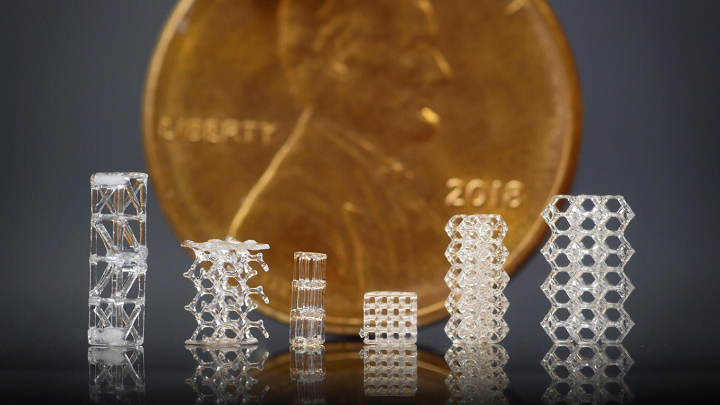 3D printed glass lattices, displayed in front of a U.S. penny for scale. Image credit: Joseph Toombs A collaborative team of researchers from UC Berkeley and the Albert Ludwig University of Freiburg published a study on their faster way to 3D print glass microstructures with higher strength, optical quality, and design flexibility. Three years ago, the UC Berkeley researchers developed computed axial lithography (CAL), which can print glass and fine features, and together with the Freiburg researchers, expanded the capabilities in a new system called micro-CAL. Instead of building objects up from layers, CAL uses a laser to project patterns of light into a rotating volume of light-sensitive material to print the whole glass object simultaneously; micro-CAL can print microscale features in glass structures. The Freiburg team created a resin with glass nanoparticles surrounded by a light-sensitive binder liquid, which is solidified by digital light projections. The printed object is then heated to remove the binder, and fuse the particles into a solid glass object with smoother surfaces and more strength. This could a major boon for manufacturers of microscopic optical components, which are used in advanced microscopes, compact cameras, and VR headsets.
3D Printed Replica of SpaceX Launch TowerAn Duong, the Founder and Director at Morethan3D Ltd, shared his latest 3D printing project in a LinkedIn post—the SpaceX Orbital Launch Integration Tower (OLIT). He explained that a few years ago, he designed and 3D printed a series of jet engine models, and has been looking for a new project that might “be as engaging and inspiring to the school kids,” and found it in the OLIT. The goal is to inspire young children to learn more about space, 3D printing, and other STEM subjects with a challenge to stack the Startship and Booster together in the least amount of time. The 3D printed replica is a 1/96 scale model, and you can download the STL files and print the OLIT yourself, or order the 3D printed, unassembled model, with pre-fitted magnets, directly from Morethan3D. Duong included print and assembly instructions for the OLIT model, for which you will need a printer with a minimum build volume of 216 x 200 x 178 mm.
The post 3D Printing News Briefs, May 11, 2022: Software, Research, & More appeared first on 3DPrint.com | The Voice of 3D Printing / Additive Manufacturing. |
| Custom 3D Printed Tooling Gets Automated with BigRep’s FLOW Software Posted: 11 May 2022 05:30 AM PDT At formnext 2021, large-format 3D printing company BigRep unveiled its new generation of printers, including the new and improved BigRep PRO and the upgraded BigRep ONE 3D printer. Now, just before RAPID + TCT, the company has introduced a customizable Software as a Service (SaaS) product, called BigRep FLOW, that should make it easier to print production aids, jigs, and fixtures, no matter how little experience you have with 3D printing and CAD software. This new end-to-end workflow solution is meant to automate not only design, but also the whole application engineering process for printing ready-to-use tooling. The FLOW SaaS solution is a collection of Configurator Apps. First, the software product offers a customized app so customers can easily create 3D printable factory tooling that meets benchmarks and qualifications, so it can used in real-life applications. Additionally, BigRep FLOW includes multiple sample apps that can be used to print a variety of factory aids and tools, such as transporters and organizers like custom boxes, shadow boards, storage dividers, and trays. Tooling and factory aid apps can be used to create complex parts like assembly jigs and soft jaws.
The simple solution is only four steps, starting with filling out the form at the bottom of the FLOW page and telling BigRep’s engineering team what you’re looking for in a tooling or aid product. BigRep works with the customer to figure out how feasible the solution will be, based on user-defined qualifications and benchmarks, before moving into the second step—developing a custom BigRep FLOW app that can create your 3D printable production aids and tooling. Step three is configuring the design once you get access to your custom app and have uploaded your part file. BigRep says the software enables all design configurations to be optimized for 3D printing speed and lower material costs. Finally, you can print your tool in-house on a BigRep system, or have it printed by an external service. Once you’ve used BigRep FLOW a few times, you can log into your account and check out the App Library, which includes free sample apps in addition to custom ones already created for you by BigRep. Once you’ve opened the correct one, upload your 3D file to generate a custom fixture, and configure the parameters, before 3D printing the tool or aid or ordering it. According to BigRep, its new FLOW SaaS solution can help save time and money by replacing existing 3D design and printing workflows. The company says that instead of days, its customizable product only takes minutes to create 3D printable tools, which would certainly help if you’re dealing with multiple design iterations. BigRep says that the cloud-based interface is intuitive, which should enable simple configuration of custom tools, as well as real-time design change calculations with “instant visualization.” FLOW is accessible across multiple platforms, including mobile devices, and BigRep says that users don’t need any experience with or training in CAD software and 3D printing to create custom, functional engineering tools with this solution, because it’s so “straightforward and streamlined.” You can visit the BigRep FLOW page to try out the new automated SaaS solution for yourself. The post Custom 3D Printed Tooling Gets Automated with BigRep’s FLOW Software appeared first on 3DPrint.com | The Voice of 3D Printing / Additive Manufacturing. |
| Low-Cost DED Metal 3D Printing Heads to Singapore and Argentina via Meltio Posted: 11 May 2022 05:00 AM PDT Spanish laser metal deposition solutions manufacturer Meltio continues to ramp up its sales coverage in Asia and Latin America. Following recent deals to sell its products in Sub-Saharan Africa, North America, Brazil, Japan, and the Benelux region, Meltio announced new partners, ELH Additive in Singapore and Tecmahe in Argentina. Boosting its territorial spread can help speed up machine distribution and play a key role in after-sales support. As official sales partners, Tecmahe and ELH Additive will focus on building a supportive ecosystem for Meltio's technology. One of the key strategies is to locally partner and drive business opportunities alongside technology centers, tooling machine companies, robotic integrators, academia, and industry. Designed for industry without the need for industrial infrastructure, Meltio's laser metal deposition (LMD) process is built around wire, the safest, cleanest, and lowest-cost metal feedstock in the market. LMD is a directed energy deposition (DED) process that functions by precisely stacking weld beads on top of one another, in powder or wire form, when introduced into the laser-generated melt pool.  Meltio’s wire and powder multi-laser deposition metal 3D printing platform. Image courtesy of Meltio. Launched commercially at Formnext 2019 through a joint venture of Additec, a Las Vegas-based technology company, and Sicnova, a leading 3D printing equipment distributor, Meltio's LMD multi-metal additive manufacturing technology and in-house materials enable a whole range of potential applications, including for the aerospace and oil and gas industries. Moreover, thanks to a patented process that uses multiple lasers, the technology offers some of the lowest production costs in the industry. CTO Brian Matthews even points out that in some cases, Meltio's costs are lower than fused deposition modeling (FDM). Meltio’s laser head incorporates multiple laser inputs and also high power capability. However, the technology is not only intended for 3D printing but can be adapted for traditional manufacturing, such as casting, CNC, and subtractive machining. For example, Meltio says its engine CNC integration solution can fit any CNC machine in the market by turning it into a hybrid manufacturing system with no inherent size constraints but those of the motion system. Since its inception, Meltio, headquartered in the Jaén province of southern Spain, had plans to expand its territorial scope. The brand already sells most of its products abroad and hopes to reach more than 60 countries by 2022. In Asia, the startup has established a presence in countries such as China, Japan, and Kazakistan. The latest addition of a Singaporean sales partner brings it one step closer to its goal. With ELH Additive as its official sales partner, it expects to boost growth in the Singapore metal additive manufacturing market. In addition, the 3D printing service bureau has ventured into AM since being established in 2009, providing services like reverse engineering to 3D printing, product development, and more. It is constantly expanding its partnerships and collaborates with R&D teams such as GE Aviation and ST Aerospace to enhance its engineering processes and capabilities. Aside from serving Singapore, the company also plans to supply Meltio products to other Southeast-Asian territories. Similarly, in Latin America, Meltio has expanded into Brazil, Mexico, and Chile. Just a year ago, Meltio Territory Sales Manager, Juan Carlos Miralles, suggested the brand had big plans for the region, particularly for two of the most robust manufacturing markets, Mexico and Brazil. Still, the latest addition of Argentina will add new customers to the brand. For the task, Meltio selected a local company with more than 60 years of experience in commercializing machine tools throughout the southern cone. Tecmahe is currently divided into three main branches, machine tools, robotic systems, and 3D printing, the latter being the fastest growing in recent years. Now, Meltio's M450, Engine CNC Integration, and Engine Robot Integration are already being commercialized through Tecmahe's official site, alongside machines from 3D Systems. As one of Spain's newest metal 3D printer manufacturers, Meltio expects to raise roughly €7.5 million by the end of this year, according to Spanish financial newspaper El Economista. Other expansion plans include commercial showrooms in India, China, and the US, along with a 57% workforce increase by late 2022, hoping to go from 70 employees to 110. The post Low-Cost DED Metal 3D Printing Heads to Singapore and Argentina via Meltio appeared first on 3DPrint.com | The Voice of 3D Printing / Additive Manufacturing. |
| Shell 3D Prints Impellers for Its Dutch Refinery Posted: 10 May 2022 06:30 AM PDT The oil and gas industry hasn't adopted additive manufacturing (AM) techniques to the same extent as some other large-scale industries, like the aerospace and automotive sectors. Nonetheless, oil and gas companies were fairly early adopters of AM, and some of the largest companies have made substantial investments in the technology. Moreover, it appears that, with investor money gradually starting to return to the sector, oil and gas companies are picking up the pace with which they incorporate new manufacturing processes. One such company is Shell: among the largest companies in the world, and a user of AM for over a decade. According to the company's 3D printing technology lead, Angeline Goh, Shell recently put into action 3D printed impellers for a centrifugal pump at the Shell Energy and Chemicals Park in Rotterdam. 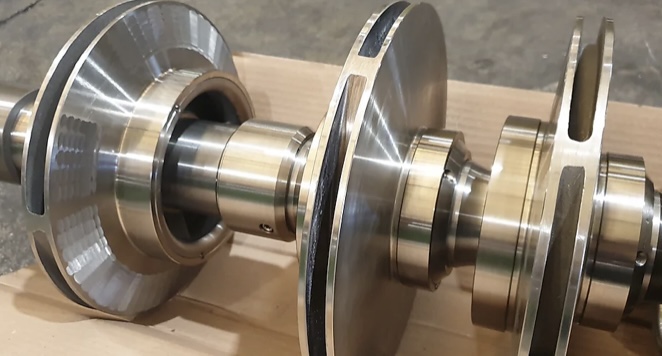
This is why, on an earlier project, Shell worked for four years to gain third-party certification of its 3D printed pressure vessels. When Shell gained certification from LRQA (formerly Lloyd's register) for the pressure vessels, it became the first European company to have a CE certified, in-house printed part. 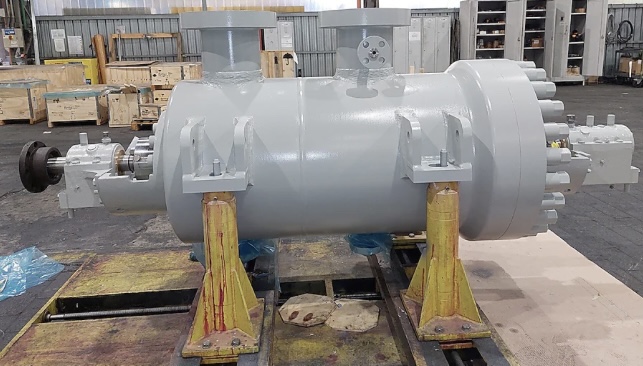 On the 3D printed impellers project, Shell also worked with Texas-based Baker Hughes, one of the largest oilfield services firms in the world. Similarly to the work on the pressure vessels, Goh notes that, "A key objective of this collaboration…was to design a repeatable qualification process for vendors of 3D printed parts." She adds that Baker Hughes has been qualified by Shell to supply the company's oil operations in Italy, and that the two firms are working together to create a digital portfolio of impellers. Keeping spare parts on hand for each pump in operation costs Shell about $100,000, so switching to a digital, print-on-demand supply chain could obviously save a great deal of money. This is especially important at a time when oil supermajors are trying to attract investor dollars, and thus need to prove that they can streamline and effectively manage supply chains. The oil industry also operates in remote locations all over the planet, adding an extra incentive for a company like Shell to take its inventory control into its own hands. That this story, as well as one last month from Chevron, have been released in such close proximity to one another, suggests that the oil and gas industry has entered a new phase in its incorporation of 3D printing. The fact that regulatory requirements for 3D printed parts are now being established and met means that more and more companies are likely to follow suit. It’s no surprise then that SmarTech Analysis projects AM for oil and gas to be a $2 billion opportunity by 2029, according to its “The Market for Additive Manufacturing in the Oil and Gas Sector 2018-2029” report. The post Shell 3D Prints Impellers for Its Dutch Refinery appeared first on 3DPrint.com | The Voice of 3D Printing / Additive Manufacturing. |
| You are subscribed to email updates from 3DPrint.com | The Voice of 3D Printing / Additive Manufacturing. To stop receiving these emails, you may unsubscribe now. | Email delivery powered by Google |
| Google, 1600 Amphitheatre Parkway, Mountain View, CA 94043, United States | |

